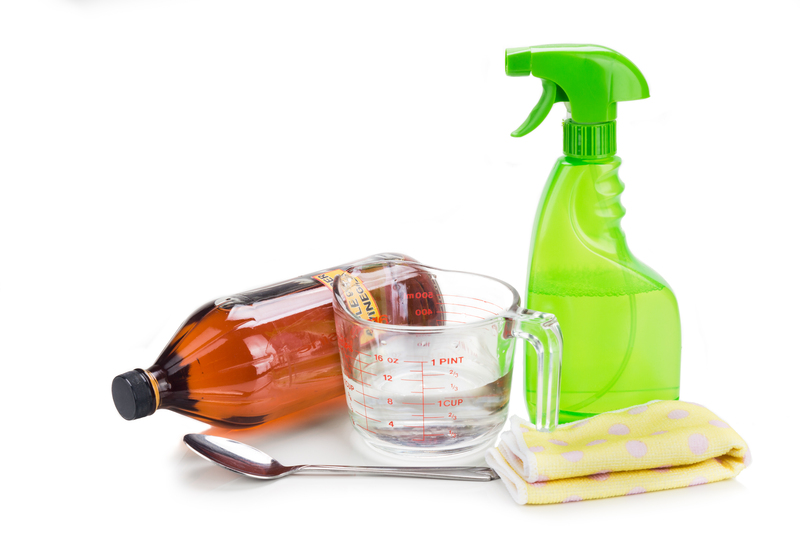Timeless Techniques for Cleaning All Types of Jewelry
Posted on 09/09/2025
Timeless Techniques for Cleaning All Types of Jewelry
Jewelry is more than just an adornment; it's an expression of personality, taste, and treasured memories. Keeping your favorite pieces shining and spotless isn't just about aesthetics--it also preserves value and prolongs their life. In this comprehensive guide, we'll share timeless techniques for cleaning all types of jewelry, helping you maintain their brilliance safely and effectively.
Why Proper Jewelry Cleaning Matters
Regular jewelry cleaning offers numerous benefits:
- Preserves shine and brilliance by removing grime, oils, and lotions.
- Prevents damage like tarnishing, scratches, or stone loosening.
- Protects your skin from irritants trapped in dirty jewelry.
- Supports the longevity of precious heirlooms and daily wear items alike.

Understanding Different Jewelry Types
Before applying any jewelry cleaning technique, it's crucial to recognize what you're caring for. Gold, silver, diamond, gemstones, pearls, and costume jewelry each have their own unique cleaning requirements. A method perfect for one may be disastrous for another!
Common Materials Found in Jewelry
- Precious Metals: Gold, platinum, silver, white gold, and rose gold.
- Gemstones: Diamonds, sapphires, rubies, emeralds, and opals.
- Pearls: Cultured, freshwater, saltwater.
- Costume Pieces: Base metals, glass beads, faux pearls, rhinestones.
Time-Honored Techniques for Cleaning Jewelry
Whether your jewelry is a family heirloom or your latest fashion statement, these timeless cleaning techniques can restore its original allure. Here's how to care for each type:
How to Clean Gold Jewelry
Gold's natural luster can be dulled by lotions, body oils, and everyday grime. Fortunately, gold jewelry cleaning is straightforward and safe:
- Soak Method: Fill a bowl with warm water and a few drops of mild dish soap. Soak your jewelry for 15-20 minutes.
- Gently Brush: Use a soft-bristled toothbrush to remove buildup, paying special attention to crevices.
- Rinse and Dry: Rinse in lukewarm water and pat dry with a soft, lint-free cloth.
Tip: Avoid harsh chemicals, toothpaste, or abrasive materials which can scratch and weaken gold.
How to Clean Silver Jewelry
Silver is notorious for tarnishing due to exposure to air and moisture. Here's a classic technique to revive its shine:
- Aluminum Foil Bath: Line a bowl with aluminum foil (shiny side up). Add hot water and a tablespoon each of baking soda and salt. Place your silver on the foil, ensuring it touches the surface. Watch as the chemical reaction lifts away tarnish!
- Rinse and Dry: After a few minutes, remove, rinse thoroughly with cool water, and dry with a soft cloth.
Tip: Regularly polish with a silver cloth to slow future tarnishing.
How to Clean Diamonds and Gemstones
Diamond and most gemstones are tough but can still accumulate layers of oil, dust, and dulling residue.
- Mild Soapy Solution: Mix a small amount of gentle dish soap with warm water. Soak diamond or gemstone pieces for 20-30 minutes.
- Brush and Rinse: Carefully brush around the settings with a very soft toothbrush, then rinse under running water.
- Dry: Always dry with a lint-free cloth and inspect the setting for any loose stones.
Warning: Some gemstones (opals, pearls, turquoise) should never be soaked or exposed to harsh chemicals. Always identify your stone before cleaning!
How to Clean Pearls
Pearls are soft, porous, and require gentle care. Here's the timeless way to clean pearl jewelry:
- Wipe After Each Wear: Gently wipe with a soft, damp, lint-free cloth.
- Occasional Cleaning: Dip a cloth in a weak solution of lukewarm water and a drop of mild soap. Carefully wipe each pearl, avoiding soaking.
- Dry Flat: Let your strand dry flat on a towel before storing, to prevent stretching the silk thread.
Tip: Never use ultrasonic cleaners, steamer, or soaking for pearls.
How to Clean Costume Jewelry
Costume jewelry--often made of base metals, glues, and delicate finishes--demands careful handling.
- Use a Damp Cloth: Moisten a cloth with water or a drop of mild soap and gently wipe the surface.
- Remove Soap Residue: Wipe again with a cloth dampened with clean water.
- Dry Immediately: Tamely dry to prevent water damage or rust.
Avoid soaking costume jewelry, as water can loosen glues and tarnish finishes.
Unconventional Yet Effective Jewelry Cleaning Methods
While the classic approaches are often best, certain time-honored home remedies have also stood the test of time:
- Baking Soda Paste: Make a paste using baking soda and water. Gently rub silver with your fingers, then rinse and polish.
- Club Soda Bath: Soaking diamonds and gemstones in club soda can boost their sparkle without harsh chemicals.
- Toothpick or Cotton Swab: Great for detailed areas in intricate filigree or around gemstone settings.
- Polishing Cloths: These specialty cloths are impregnated with cleaning agents and ideal for a quick, safe shine.
Important: Be wary of internet "hacks." Household items like toothpaste, vinegar, or window cleaner can do irreversible harm. Always verify suitability for your precious pieces.
Professional Cleaning: When to Seek Expert Help
Some jewelry cleaning techniques are better left to the pros, particularly for:
- Antique or vintage jewelry with delicate settings
- Heirlooms with sentimental or high monetary value
- Fragile gemstones or porous materials (opal, turquoise, etc.)
- Heavily tarnished silver or platinum pieces
- Loose stones or damaged settings, which could be exacerbated by home cleaning
Professional jewelers have access to ultrasonic and steam cleaners, specialized polishes, and the expertise to inspect your items for wear or needed repairs.
Timeless Tips to Keep Jewelry Sparkling Between Cleanings
Preserving your jewelry's brilliance is about more than just cleaning. Try these timeless jewelry care tips:
- Remove Jewelry when cooking, cleaning, swimming, or exercising.
- Store Separately: Use soft pouches, jewelry boxes, or compartmentalized trays to avoid scratches and entanglement.
- Avoid Exposure: Keep away from harsh chemicals (bleach, chlorine), perfumes, lotions, and hairsprays.
- Wear Last: Put on your jewelry after dressing to minimize contact with products.
- Regular Inspection: Check clasps and settings regularly for signs of wear or looseness.
Frequently Asked Questions (FAQ) About Jewelry Cleaning
How often should I clean my jewelry?
Daily-wear items (such as engagement rings and gold chains) benefit from a quick clean weekly and a thorough clean monthly. Occasional pieces can be cleaned every few months or as needed.
Can I use ultrasonic cleaners for all jewelry?
No: Ultrasonic machines are safe for diamonds, sapphires, and rubies, but can damage pearls, opals, emeralds, some costume jewelry, and antique pieces. Always check before use.
How should I store my jewelry after cleaning?
Store in a dry, cool place, preferably in a fabric-lined jewelry box or individual pouches. Keep pieces separated to prevent scratches and tarnishing.
What should I never use to clean jewelry?
Avoid bleach, ammonia, acetone, abrasive powders, and regular toothpaste. These can corrode metal, dull stones, and scratch soft gems.

Jewelry Cleaning Myths Busted
- Myth: Toothpaste is a safe, quick way to clean silver and diamonds. Truth: Toothpaste is abrasive and can scratch metals and stones.
- Myth: Soaking all jewelry restores shine. Truth: Soaking can damage pearls, glued items, and porous gemstones.
- Myth: All gold is tarnish-proof. Truth: Gold can dull and even tarnish when alloyed with other metals.
Conclusion: Make Jewelry Cleaning Part of Your Routine
Your jewelry tells a story--keep it radiant with these timeless techniques for cleaning all types of jewelry. By understanding your collection and choosing the right method for each piece, you'll preserve their sparkle, value, and sentiment for years to come. Remember to clean regularly, handle gently, and consult a professional when in doubt.
With these practical and expert-approved methods, your treasured pieces can remain as brilliant as the memories they hold.
- Want more jewelry care tips? Bookmark this guide or share it with fellow jewelry lovers. Your collection deserves the best!



